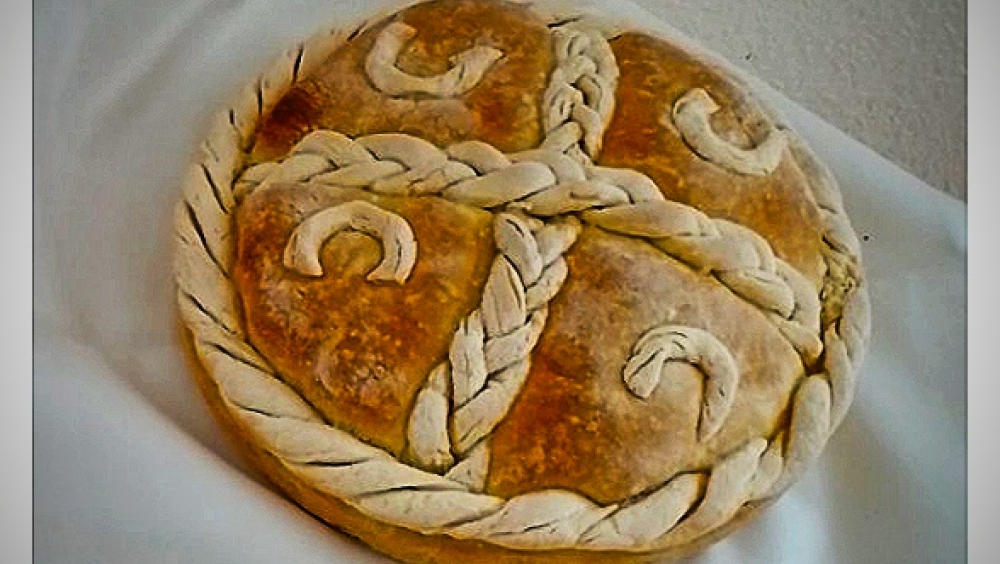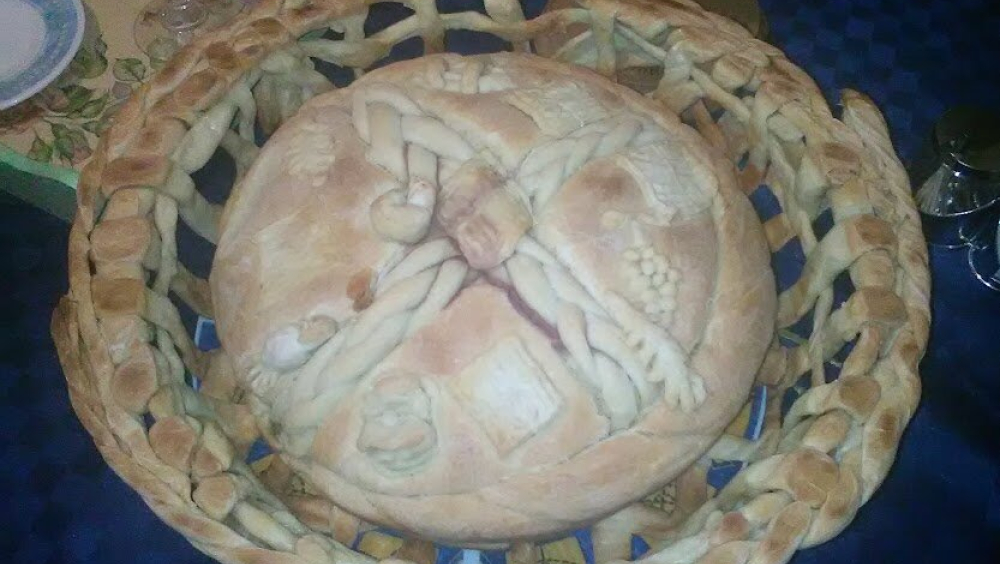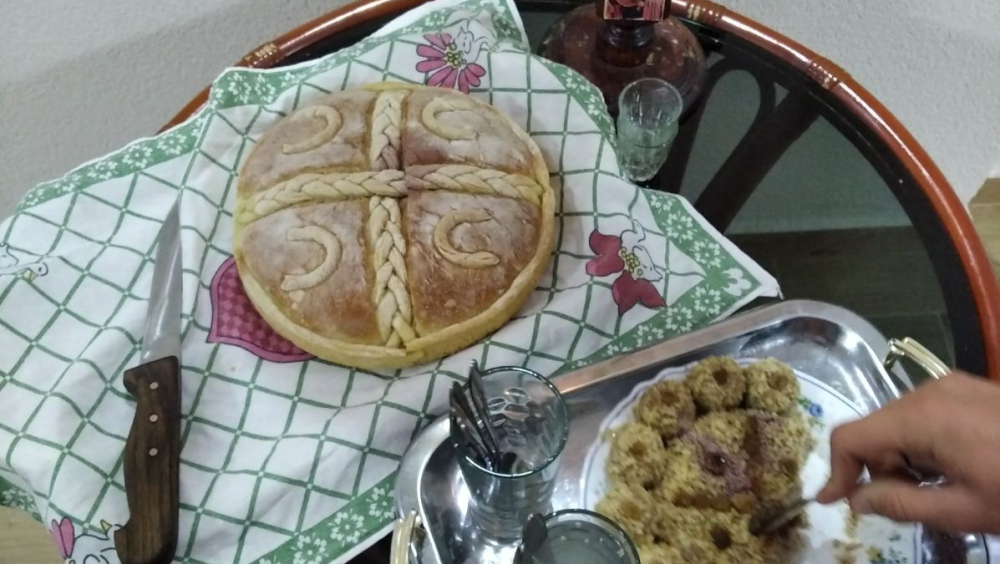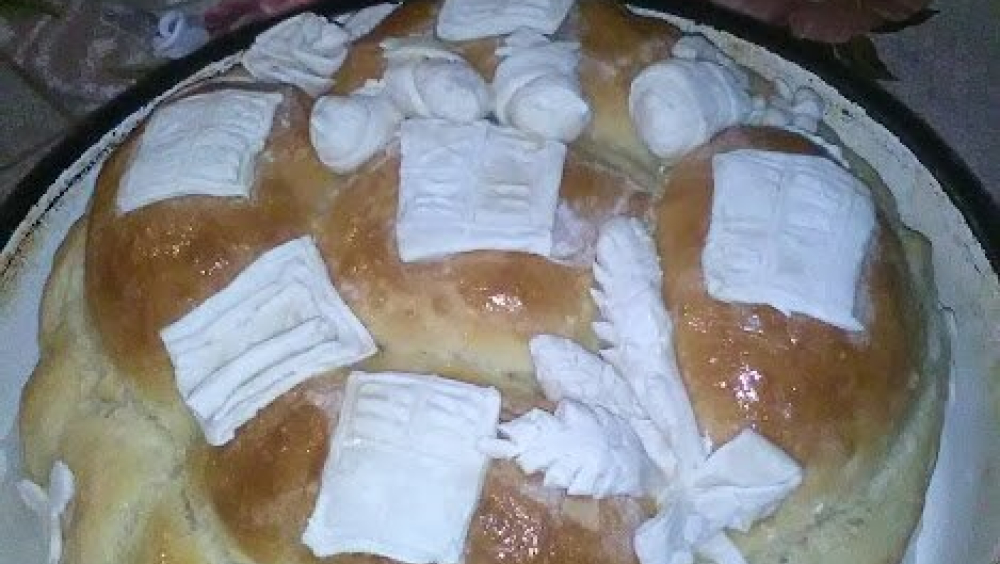Bread as the foundation of our tradition
The story of the bread ... is incredible, fascinating, gorgeous, comprehensive, but also unfinished, incomplete, the story which no one has ever told accurately or to the end. The story about bread is imbued with history, mythology, poetics, ethnology, tradition, paganism, religion... It survives what the power of oblivion has not erased ... what remains written in the memory of our people, strongly related to the entire course of human existence. Bread, as a world heritage, has achieved cult status, not only because of a habit, tradition and irreplaceability, but because it is a reflection of the culture of living. The plainest food ... and a world phenomenon. Every community in the world has its own customs and rituals related to it. Suffused with life force and victory, the bread repeats ad infinitum, communicating with ancestors and future generations. It is a man’s symbol of life, but also a picture of his transience, as it follows him from birth to death. As a sublimation of life, tranquility, unrest, storm and calm harbor, it resists the final end, breaking away from every space, border, every kind of closing. The soul that was born in the first, is also in today's bread. Without it there is no life. In many cultures, bread is perceived as a synonym for food, but it is also used in various religious ceremonies in most parts of the world. In Christianity, bread has a symbolic role. It was considered sacred and it was forbidden to feed it to animals. There was a deep-rooted belief among the people that bread should not be cut with a knife, but must be broken. It is written in the Bible: And he took bread, gave thanks and broke it, and gave it to them, saying, This is my body given for you; do this in remembrance of me (Luke 22:19). This custom is preserved today in a ritual related to Slava and Christmas Eve. A coin (usually a silver coin) is placed in česnica . In our tradition there is a widespread belief that the one who finds a silver coin in česnica at Christmas will have good luck throughout the year. This ritual bread is both a sign of berichet and a message that sharing it brings happiness. It is precisely this belief that gives it the power to grow from ordinary bread into something much greater, it becomes part of our participation in God's plan. At Christmas time, and during other religious ceremonies, bread is often mentioned one way or another. Christmas bread, česnica, has a festive place on the holiday table. It is made from sourdough. It can be salty and sweet. A gold coin, a metal coin, a grain of corn and beans, a piece of dogwood are put inside. The members of the household break it standing gathered around the bread, which symbolizes togetherness, the strength of the family bond. The Lord’s prayer begins with Give us this day, our daily bread ... Among Muslims, after a Sharia wedding, the mother-in-law waits for the bride at the threshold of the house, handing her bread and a sieve with grain, which the bride throws over herself to make the house more fertile. In some regions, after the first wedding night, the newlyweds would break the bread that the bride had received the day before. In Montenegro, bread is an integral part of rites for the birth of a child, baptism or marriage, for the posthumous cult, for home and village celebrations and annual holidays, such as Christmas. A person's whole life flows between two loaves - bread for the newborns and bread for the rest of the soul. Česnica belongs to the bread or bloodless sacrifices, like the celebration cake, and its roots should be sought in the Old Testament stories about the sacrifice of Cain and Abel, the sons of Adam. The magical power of ritual bread as sacrificial offering and its ritual use is directed to the household, fields, crops and to the fertility of livestock and poultry. People believe that the Christmas bread symbolically represents the field and the crops. When everyone sits down at the festive table, the host of the house raises the bread. Together with the family members, he rotates it three times counterclockwise. When česnica is broken in half, everyone tears off a piece. The most important thing is that one part of česnica is given to the first guest, položajnik , and one is kept for the intended passenger, that is, an absent family member. After tearing česnica, Christmas lunch may begin. Bread is an important and powerful symbol of life, modesty, transformation, strength, but also selflessness, spiritual food whose sharing is an act of faith. For Christians, bread symbolizes Jesus Christ himself. In cultures without writing and without material monuments, ritual bread has a special significance because it represents a form of collective memory. The recipe has been passed down from generation to generation, and is, therefore, an important element of ethnic identity whose preservation in multi-ethnic and multicultural communities is guaranteed as one of the basic human rights. Why do people tear off pieces of bread instead of cutting it? According to the deep and central cult of bread in the mythology of agrarian societies such as the communities in the Balkans, the process of making and baking bread corresponds to the mythological stages of the creation of the world, through the ritual meaning of the renewal of yeast (symbol of a new beginning, multiplication, Christmas yeast). This points to the symbolic association of bread and fertility, a new beginning, conception, birth, the well-being of the family - the creation of life. Therefore, there is a need to return to the roots and bread (not genetically modified) as the main food item, but also as a religious and traditional foundation. Breaking and sharing bread reminds us of mercy, compassion and modesty, and it is clear that we are constantly tempted to forget these virtues, especially in today's time of alienation. At the Last Supper, Jesus broke the bread, blessed it and gave it to his disciples, saying: Take, eat, this is my body. So he also gave them wine, saying: This is my blood of the New Testament, which will be shed on many. In Christianity, a grain of wheat is a symbol of eternal life - death and resurrection. When it is sown, it dies and germinates, but a new life is born from and it bears a hundredfold fruit. The place where Jesus was born is called Bethlehem, that is, Beth-lehem, which means House of Bread, because Jesus, according to the New Testament, is the true bread that comes down from heaven and gives life to the world. In the world of hedonism, media distraction and consumption of fast food, bread as a symbol that accompanies us from birth to death ceases to be the meaning of life and an element of family gathering around the table, which represents an image of unity, togetherness and harmony. Collapsed, lost, oppressed by personal fears, we joyfully return to bread, to the Eucharist, to tradition, to the life that takes place between two loaves of bread, a cake for a newborn and a loaf in honor of the deceased... and, between them, important events and celebrations, each of which is accompanied by a kind of ritual bread. A cake for the baptism of the baby, the ceremony when the child takes the first step, cake for the girl's shower, cookies for the Newlywed – Mladenci . Meanwhile, on the table there are Slava bread, Easter cake, česnica, cake that people share with their cattle, vasilica for the Orthodox New Year. In the past, bread played a decisive role in the place where people would build their settlements. Where there were favorable conditions for growing grain, people saw their perspective and hope. In search of bread, many wooded areas were turned into arable fields where grain sprouted. Many conquests, wars, global and local conflicts took place because of bread. Despite everything, bread symbolizes harmony, love and prosperity on all meridians. Bread was and remains the strongest and brightest symbol of human survival and ancient mysticism. He is a symbol of life and death, wealth, community, hunger, happiness, work and order, wisdom, hope, longing and desire; it is a metaphor for family harmony, kindness, smell, strength, self-preservation, anxiety, poverty, triumph; bread is synonymous with physical and mental strength. Bread is given as a gift in moments of celebration and custom, when welcoming precious guests – a piece of bread and a little salt. This custom has become part of a mandatory state protocol in most countries. Bread is associated with the cult of the fertility of the earth, which gives people new life through the cycles of sowing and harvesting. In all cultures, different creations of the human spirit, in ancient records, in many mythologies with divine stories, sayings, proverbs, questions, prayers, riddles, curses, legends, toasts, fables, folk beliefs, bread is not seen as an ordinary food, but as ancient strength and power, folk wisdom and moral judgment. Many songs have been sung about it, numerous legends have been created. Many cultural events are dedicated to bread as well. It used to serve as a charm in wars. Numerous folklore and mythological stories are told about it. There is no end to customs in which bread has not always been the first and last great word that blesses and begs - it calls and begs brothers to agree and multiply, swears and admonishes, binds and divides, advises and challenges, reconciles and vows, frightens and comforts. For a kind and noble man it is said – as good as bread; hot bread – as soft as soul; for those who take a job from others, it is said – you are taking the bread out of his mouth; for those who are looking for a job or a better life – He left with his belly seeking for bread, and to step on the bread means to betray the host where the person was hosted. The most common curses were: May this kill you; May you had no bread to eat; I swear innsalt and bread. Bread has a central place in many traditional customs, such as weddings, the birth of a child, engagement, threshing, helping in the field, etc. Women are the ones who prepare, give, receive or reciprocate the gift through bread. In the Balkans, bread has a distinguished ritual function, it is not only a food, but also a symbol. In our tradition, mythology and legends, bread is given divine properties and power. The importance of bread in our folk tradition is empahasized through many proverbs related to it. Muslims have an interesting proverb: You can step on the Koran to reach the bread, but you must not step on the bread to reach the Koran. Proverbs: The farmer has black hands, but white bread; Even dry bread is sweet to a healthy person; If someone throw a stone on you, give him a bread; With your bread you will find a place at the table; What the bread does, the sword does not do; There is always some bread for a good man; Bread cut with someone else's knife does not taste good; It is a long day when there is no bread; God dwells in bread; From the black earth, white bread comes; There is no bread without a hoe; In summer, don't go anywhere without a coat, and in winter without bread; Without bread, a table is just a board (Russian proverb). Toast: May you sit down honorably, eat, stand up honestly, bring a good message, take a better one with you, God bless...



